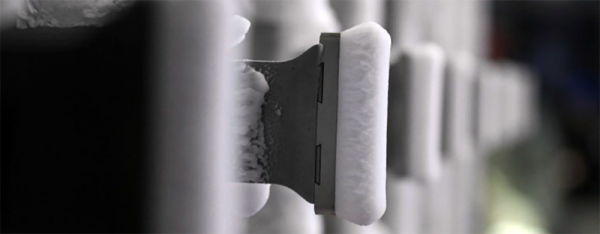Characterization of Low Ice Adhesion Materials
 This effort seeks to characterize ice adhesion properties with the ultimate goal of understanding ice shedding and advancing the development of low ice adhesion materials. There is a wide range of methodologies used to measure the stresses that induce interfacial delamination of ice. Example experimental methods include the modified lap joint test and centrifuges. NASA is applying these methods to study the adhesion properties of impact ice, which refers to the type of ice that forms when supercooled liquid drops strike an aircraft surface. Also, NASA has been developing a new technique called the Deformed Skin Adhesion Test (DSAT), which looks to measure the adhesive strength of ice directly in an icing wind tunnel. In addition to these experimental methods, several supporting measurement techniques have been developed to better understand the mechanical behavior of impact ice under a variety of icing cloud conditions. Digital image correlation has been successfully implemented to show the full field surface displacement and strain measurements that occur during an icing test. Finally, both optical microscopy of impact ice samples along with ice replication techniques have been used to study the grain structure of the impact ice.
This effort seeks to characterize ice adhesion properties with the ultimate goal of understanding ice shedding and advancing the development of low ice adhesion materials. There is a wide range of methodologies used to measure the stresses that induce interfacial delamination of ice. Example experimental methods include the modified lap joint test and centrifuges. NASA is applying these methods to study the adhesion properties of impact ice, which refers to the type of ice that forms when supercooled liquid drops strike an aircraft surface. Also, NASA has been developing a new technique called the Deformed Skin Adhesion Test (DSAT), which looks to measure the adhesive strength of ice directly in an icing wind tunnel. In addition to these experimental methods, several supporting measurement techniques have been developed to better understand the mechanical behavior of impact ice under a variety of icing cloud conditions. Digital image correlation has been successfully implemented to show the full field surface displacement and strain measurements that occur during an icing test. Finally, both optical microscopy of impact ice samples along with ice replication techniques have been used to study the grain structure of the impact ice.
